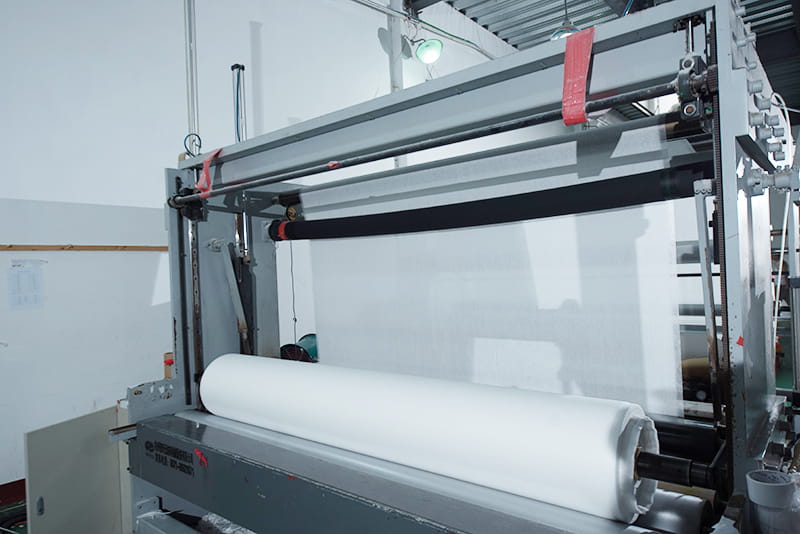 Free consultation
Free consultation
 Call Us for Enquiry
Call Us for Enquiry
 Free consultation
Free consultation
 Call Us for Enquiry
Call Us for Enquiry
Non-woven fabrics are environmentally friendly so that they can replace foam products and be used in automobiles. According to Mr. DanKamat, Vice President of PrecisionCustomCoatings, car manufacturers are increasingly aware of the environmental advantages of nonwovens compared to other materials. This can be glimpsed from the growth of the PCC needle punched and thermally bonded nonwovens business, which are increasingly used in engine hood linings, car roofs, dashboards, and other small acoustic and thermal insulation interior parts more. Automakers want to stop using non-recyclable foam materials, so nonwoven fabric manufacturers have developed materials that can replace foam and can be recycled. In addition, they can also be firmly combined with glass fiber and recycled materials. When stretched, the color is uniform, without wrinkles and tears.
German company eswegeeVliesstoffe, which specializes in the production of chemically bonded, mechanically consolidated and thermally bonded nonwoven fabrics for automobiles, has also felt the trend of nonwoven fabrics replacing woven fabrics, and new stitched products have been developed for automotive interior parts, such as cars Ceiling or glove box. Other environmentally friendly stitch-bonded fabrics have also been developed to replace foam in composite materials for seats.
Eswegee's composite nonwoven fabric is produced by hot melt lamination, which can be effectively used to replace the more traditional flame bonded woven fabric-foam interlayer material, and can be fully recycled. Multiknit and Kunit nonwoven fabrics produced by the company's Techtex stitching line in Mittweida can replace foams up to 8mm thick. The composite material can use glass fiber, carbon fiber, aromatic fiber and the combination of the above fibers to produce multiaxial non-woven fabric with a grammage of 200-2800.
Although non-woven fabrics give cars many advantages and quickly replace traditional fabrics, the needs of car manufacturers and consumers fundamentally determine the style and size of the most popular cars. Naturally, the number and variety of cars sold in a year will have a great impact on non-woven fabric manufacturers. Mr. Merchlinsky of Amoco believes that the trend of car styles, sizes and the use of materials can change very quickly, and the time period can be calculated in months.
Some car manufacturers like bucket seats. This demand will spread rapidly in the automotive industry chain, making the participation in this market very competitive, and manufacturers must therefore be able to respond to this change anytime, anywhere, and provide suitable products. The shortened product development cycle has put forward new requirements for enterprises, making them more and more invested in product development, and improving the interaction with OEM manufacturers.

In order to provide a more efficient filter, Kureha chose the ideal combination of synthetic fibers and adhesive materials such as water-soluble resins, and designed a thermally bonded non-woven fabric for vehicles. Used in engines such as engine filters. Such filter materials can be shaped according to specific filters. Colbond also offers Colbon, a thermally bonded nonwoven fabric for cabin filters. Colback is used as a supporting medium for cabin filters and as a back material for forming automotive carpets and felts. Colback uses two-component filaments with polyester as the core and nylon and polyamide as the skin. It has good thermal stability and mechanical stability. Its polyamide skin can be used as a bonding layer, which is very different from various dyes and coatings. Good affinity.
The main advantage of Colback as a carpet is that it can be preformed and connected with the pile to have good wear resistance. When used as a supporting medium in a filter, it has high toughness, air permeability and homogeneity. Cost is the main driving force for the growth of non-woven fabrics in the automotive market, but it has also become a major obstacle for non-woven fabric manufacturers. Because of the global economic downturn in the past few years, OEMs have exerted great pressure on first- and second-tier automotive suppliers Affects participants in the entire supply chain, including coil producers, because they are also struggling for high-priced raw materials.
Mr. Verbakel of Colbond said that sometimes excessive attention to the cost of individual components has led to the neglect of the entire cost or the quality of the final product. We have noticed that the laggards in the automotive manufacturing market show a tendency to believe that high output can be used to To meet the excess capacity of their pile production line. This is a bad thing for everyone, not only because of high price pressure, but also logistics and quality requirements. The cost of stalling the original equipment production line per minute is thousands of dollars. Whether it is the coil producer's small profit sales or the car manufacturer's purchase of these materials at a price below the market, they cannot compensate for these high risks.